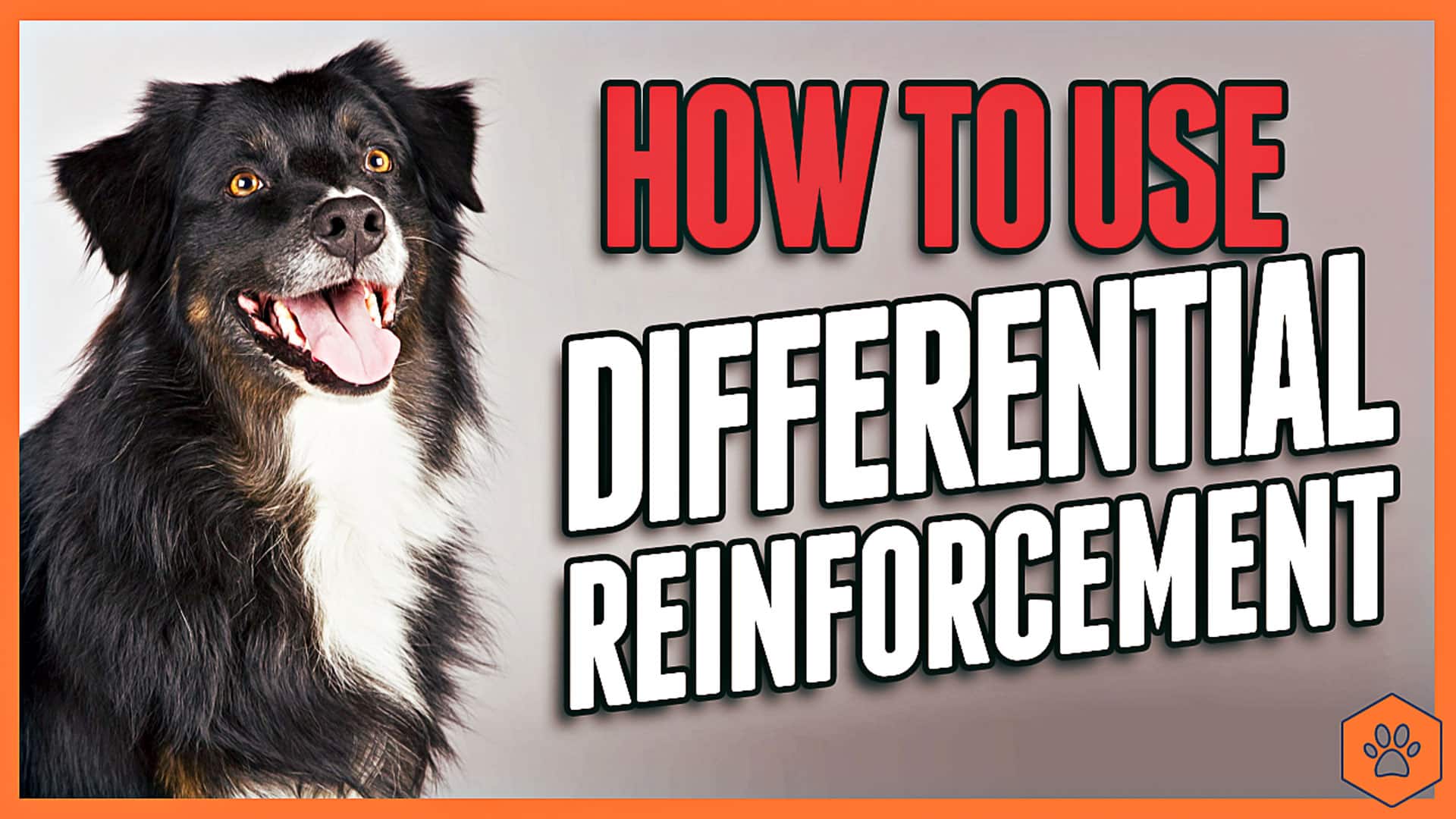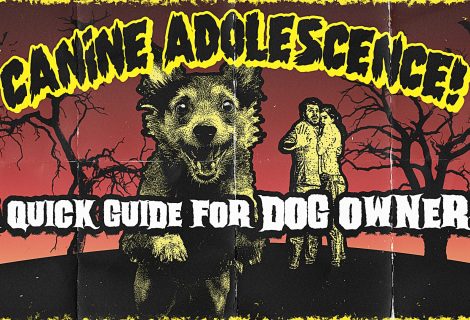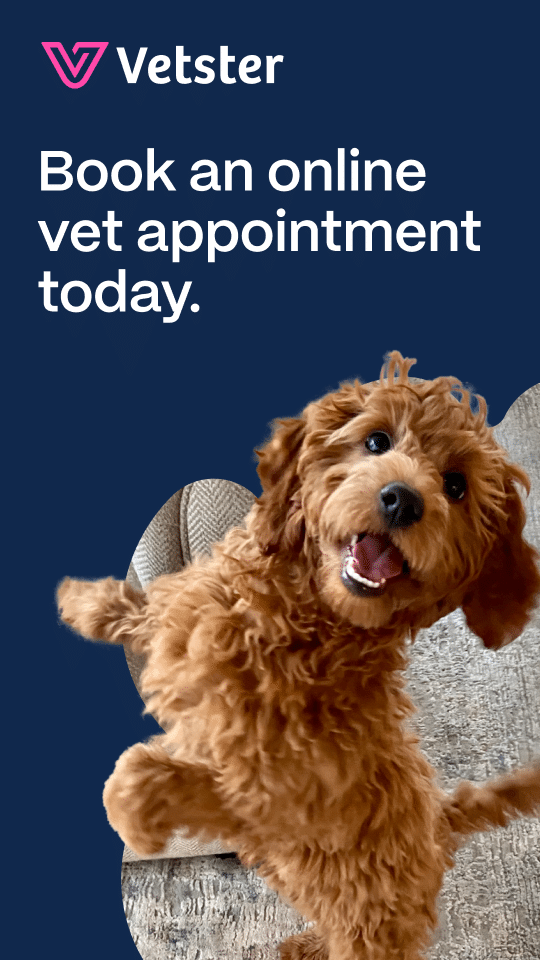Stop Ignoring: How to Use Differential Reinforcement in Dog Training
Dog training advice for undesirable behaviors and behavior problems frequently includes ignoring your dog to extinguish those behaviors. Unfortunately, this strategy is fraught with difficulties, and the behaviors you’re working on rarely shrivel up on their own. Differential reinforcement is a much more effective approach, which supersizes the behaviors you want and will edge out the unwanted behaviors. There are three types of differential reinforcement, and each one has applications where they work the best. This blog post will discuss each type and how to use them to turbo-charge your differential reinforcement dog training.
IGNORING UNWANTED BEHAVIOR ISN’T GOOD ENOUGH
Ignoring undesirable behavior is popular advice. The goal is to remove all the available reinforcement from problem behavior to extinguish it completely. “Extinction” is when a behavior stops occurring after removing the previously associated reinforcement. So, the idea goes, if your dog jumps on you for attention and you consistently turn your back or walk away whenever he does it, eventually, he’ll stop jumping because he won’t get the attention he wants anymore. The problem is that ignoring rarely leads to actual extinction. And extinction is problematic as a standalone strategy for several reasons.
WHAT’S THE REINFORCER?
When attention is the reinforcer, the frequency of a particular behavior will ostensibly decrease as attention is withheld. This example demonstrates classic operant conditioning principles: It’s negative punishment (P-) to ignore a problem behavior by withholding reinforcement like attention; i.e., something the dog wants is taken away to reduce the behavior, like a penalty. For this to really work, the attention has to have already been started so that its removal is obvious to your dog. So, if you come home and start giving them attention—even verbally—and then disengage the instant you get a problem behavior like jumping or mouthing, then that “penalty” is super obvious. This process can have some desirable effect on things. However, we have to ask if attention is really the maintaining reinforcer. There could be other ancillary operations happening there. That’s a critical question whenever you’re being told to “ignore problem behaviors” because that presupposes that attention is the main reinforcer. If there is other reinforcement coming from the environment, ignoring is just spitting in the wind.
HERE’S THE RUB: if attention is, in fact, the reinforcer, then other methods like shouting “NO” or kneeing your dog in the chest usually still provide some attention; you’re giving reinforcement for jumping. Of course, those aren’t necessarily the attention they wanted, but it’s attention nonetheless. Plus, you’re just lighting up the nervous system with threatening inputs, which also tends to exacerbate the situation. So, removing all reinforcement from the environment is nearly impossible to do. When your dog can access reinforcers willingly outside of our control (like the bad attention I mentioned), this is called “Bootleg Reinforcement” I discussed this more in the Premack Principle article. And correcting behaviors only suppress them; it doesn’t teach any other coping methods and thus is likely to activate other annoying behaviors.
EXTINCTION IS TEDIOUS
Another issue is that problem behaviors are usually already on a lean schedule of reinforcement. This means that the behavior in question runs just fine on barely anything at all. I’ve consulted in many situations where it only took ONE PERSON to screw up the training for an entire family. That tiny, infrequent reinforcement was all it took to maintain the unwanted behavior. Thus, annoying behaviors are usually very persistent; which means that unwanted behavior is also generally highly resistant to extinction. That makes extinction procedures very slow. Most people don’t have the tenacity to complete it successfully.
“IT’S NOT WORKING!”
Most folks never make it through an extinction burst, either. Extinction bursts are expected when working on reducing any behavior with your dog, but they’re especially common when trying to extinguish a behavior. An extinction burst is when behavior increases in frequency and intensity before decreasing. So, if your dog jumps on you and you ignore him, he may jump even more, and with more enthusiasm, before he finally calms down. People give up and bail out of the training all the time at this point. This is where they hop from strategy to strategy hoping something sticks.
Extinction-elicited behaviors (e.g., frustration, aggression) are also very common. This is when the dog does something else that’s problematic due to being deprived of reinforcement. For example, if your dog jumps on you and you ignore him, he may start to lunge or snap at you instead. This is often called “extinction-induced aggression.” And then, to add insult to injury, resurgence and recovery are also a thing. This is where a behavior you thought was finally extinguished pops up fully formed one day again like it had always been there (and now YOUR frustration and aggression will probably spike). BOTTOM LINE: Extinction is not recommended as a standalone procedure.
DIFFERENTIAL REINFORCEMENT TO THE RESCUE
Differential reinforcement is a much more effective way to train your dog. It involves focusing on what you want instead of what you don’t want. As I demonstrated earlier, when you try to squash behavior, it usually doesn’t work, and the behavior worsens. But if you focus on reinforcing other behaviors, they will get bigger and replace unwanted ones. Like all living things, dogs are excellent at figuring out what gets them reinforcement. So, you change behavior for the long term by showing the learner what’s right. Then you can capitalize on a powerful concept in psychology: THE MATCHING LAW. The matching law states that, when given a choice, an individual will engage in the behavior that yields the more valuable reinforcer. So, imagine there’s a five-dollar bill and a twenty-dollar bill on the table, and I tell you that you can only pick one—of course, you’re going to pick up the higher denomination bill, the $20. The opportunity to pick a $20 is more reinforcing for you than picking up a $5, so you naturally gravitate to the option that works better for you in that situation. Learners tend to repeat behaviors that are the most reinforced. This basic principle is the foundation of most psychological theories of learning. The matching law has important implications for differential reinforcement. To increase desirable behavior, you need to reinforce it more. And if you want to decrease an undesired behavior, you need to stop reinforcing it. Those two things work in tandem. Differential reinforcement is simply the application of the matching law to behavior change. Any behavior is good to reinforce, but it’s best to capture behaviors that your dog volunteers. This instant, free-shaping feedback can modify behavior super quickly. There are four main types of differential reinforcement: DRO, DRA, DRI, and DRE. Let’s take a closer look at these types, and then we’ll get into some examples.
DRO: DIFFERENTIAL REINFORCEMENT OF ANY OTHER BEHAVIOR
DRO is the simplest way to get started with differential reinforcement. In this approach, you reinforce pretty much anything other than the behavior you don’t like. I mean, almost anything. If your dog is jumping, you could reinforce four-on-the-floor, standing sideways in front of you, packing around a toy, sitting, backing away, even the dog jumping without contact…practically anything at this point to get the process moving. For barking at something outside you might reinforce looking at the trigger, stepping towards you, turning their head momentarily, chasing a treat, air-scenting, giving cut-off cues like sniffing the ground or standing in balance (even if they’re barking—I know that sounds crazy).
You wouldn’t want to reinforce “not barking” because that’s what we call a “dead dog behavior.” Any behaviors that a dead dog could also do (dead dogs don’t bark either, after all) are not things we can necessarily reinforce. In all training—and especially in differential reinforcement—you want to focus on TO-DOs. Only look for other behavior that you can observe, and describe, and that only a living dog can do. DRO has the benefit of being useful “on the fly.” You don’t have to have any planning in place, so if you get blindsided by your dog acting foolishly in public, this is an excellent way to salvage some good feedback. Turning surprises into teachable moments is a high-end owner skill!
DRA: DIFFERENTIAL REINFORCEMENT OF ALTERNATIVE BEHAVIOR
In DRA, you will focus on highlighting those behaviors that are appropriate for the situation but may not immediately cancel out the one(s) you don’t like. For example, for a dog that alarm barks at people through the window, I would start supersizing, looking at me when they see someone, and then running over for a reward when I mark the behavior. And then I’d send them back to do it all over again because repetition is how you make gains (just like at the gym).
Even though that dog can still bark while they’re engaging and moving with me (and they often do), things start to shift. Over time, I will have supersized the inclination to engage with me over fixating at the window, and the barking will kind of fizzle out. Then when the dog sees someone out the window, we get one small chirp and then immediately look over to see what I’m doing. In contrast to DRO, DRA involves reinforcing a few things you already have in mind that you’re trying to steer your dog toward. You may even have pre-taught them beforehand. As a result, DRA is usually more focused.
DRI: DIFFERENTIAL REINFORCEMENT OF INCOMPATIBLE BEHAVIOR
DRI is kind of like the executive version of DRA. In this case, you will have specific actions in mind that cancel out the one you’re trying to diminish. The behavior you’re actively trying to supersize, and the unwanted behavior cannot occur simultaneously, hence the “incompatible behavior” part. In DRI, you need a specific target behavior that you’re going to plug in with positive reinforcement—and you need to establish a strong history of reinforcement with that behavior before you begin.
For example, if you’re working on your dog jumping on guests, you’d put together a list of things that your dog cannot physically do at the same time as jumping, such as sitting for petting. For a dog that excitement-barks when people come over, you might reinforce the dog for picking up a toy to pack around as a more appropriate behavior (this tends to work really well with gun dogs). DRI and DRA are pretty similar. The main difference is that the alternate behaviors you reinforce aren’t necessarily incompatible in DRA. So your dog could still possibly practice the unwanted behavior and still receive reinforcement for the alternative behavior. However, in DRI, it’s physically impossible to do both. Therefore, DRI is the most tactically efficient method, although it requires the most prior planning and pre-teaching.
DRE: DIFFERENTIAL REINFORCEMENT OF EXCELLENT BEHAVIOR
Differential Reinforcement of Excellent Behavior (DRE) is the last variety of differential reinforcement. Simply put, DRE selects only the best versions of a given behavior. The fastest sit, the longest stay, the most stylish come-to-heel—you’re basically the game show host judging for the best answers from your dog.
DRE aims to take behaviors that your dog already knows well and shape them into the best versions they can be. This is especially useful for behaviors that need a certain level of proficiency.
Dr. Ian Dunbar, the noted veterinary behaviorist and dog training guru, has repeatedly stated that he believes DRE is the superior method used in proofing behaviors, even against the oft-discussed reinforcement schedules.
In DRE, the setup doesn’t necessarily have to be an “all or none” setup. Instead, you can use reward-scaling to communicate that better behavior results in better rewards. Again, this is the Matching Law at work. Couple this with Simpawtico’s concept of Modular Reward-Events, and you can quickly move through a training progression.
For example, when I was teaching my dog, Wednesday, how to do the come-to-heel maneuver, I started with the usual lure-reward training to jumpstart the behavior for her. Then I faded the lure, got the behavior on only the hand signal, and even dialed down the hand signal, so it was extremely minimal. Finally, when she knew the movement well and could do it in all sorts of places, some DRE shaved off all the sloppy responses. Her responses became slick, prompt, and good-looking in no time, and we did this without more food (in fact, food became less and less necessary!).
IT’S A SPECTRUM
Hopefully, you can see how the parameters get narrower and narrower.
- DRO procedures can be done in the moment without too much prior planning. Just about any other behavior will do; it’s how you can get your foot in the door.
- DRA needs some more forethought and work on the front end—it’s probably the one you’ll use the most out of the three.
- DRI is the most technical but also the most precise. You’re working on a specific behavior; it’s the surgical strike!
- DRE is usually the finisher, polishing up the things you like into their best versions.
EXAMPLES OF DIFFERENTIAL REINFORCEMENT
Here are some further examples of practical applications of differential reinforcement in your work. Each problem will be followed by a breakdown of the best version of reinforcement, along with the relevant add-on strategies.
ADD-ON ABBREVIATIONS
You’ll probably notice that differential reinforcement is just one piece of the puzzle. Although it’s a powerful tool in your arsenal, it’s not a magic bullet (in fact, no training strategies are!). All training systems involve a combination of tools. Some of the things you’ll see in the following breakdowns include:
- D/CC: “desensitization & counter conditioning” This relies heavily on respondent (classical) conditioning.
- O/CC: “operant counter conditioning” Here, we change how a dog responds to environmental prompts by supplanting new observable behaviors. You can do this in many ways, but positive reinforcement is always the preferred method.
- Antecedent arrangements: an antecedent arrangement is when you set up the environment in a way that encourages or discourages a behavior. It’s looking critically at the environment or situation and making changes to influence your dog’s behavior.
- Safety & Management: an extension of antecedent arrangement. This ensures your dog can’t practice the unwanted behavior, even if they want to. Sometimes this will be as simple as closing a door or gate. Other times this may involve tethers or muzzles.
The following lists are not intended to be recipes because I’m using shorthand names for strategies you may not be familiar with. Some are Simpawtico originals, and some are things I’ve picked up from other great trainers. Whenever possible, I’ll link to further resources so you can learn more!
JUMPING
- Safety & management—antecedent arrangements (e.g., don’t let the dog have access to grandma!).
- Block jumping (remove reinforcers) by blading, turning, or setting up a “personal perimeter.”
- Ongoing feedback (DRO), “4-on-the-floor” (DRA), Auto-sits (DRI) — you can really hit the trifecta here!
- Since attention is usually the primary motivator, you can differentially reinforce with attention into the behaviors you prefer. Food rewards can help get you jumpstarted but aren’t absolutely necessary.
- Once you’ve established some alternate behaviors, DRE can really get those to pop!
Check out the PDF on jumping for more detailed instructions.
PULLING ON A WALK
- Good indoor training and practice (DRI)
- Safety & management: develop good handler skills (it ain’t all on the dog, you know!)
- Slow transition to the outdoors—gradually altering the antecedent arrangement (DRA/DRI, O/CC)
- Tension Control techniques on the leash help the dog make more reinforcing decisions as they move (DRA/DRI, O/CC)
- DRE after you’ve made it this far will shape it up tight.
My online walking course has three hours of lessons guiding you through this process!
LEASH REACTIVITY
- Safety & Management—antecedent arrangements (safety layers + smart setup to keep the dog under threshold)
- Tension Control techniques on the leash help the dog stand in balance to bring cognitive thinking online—(O/CC, D/CC, DRA)
- “Snapback” check-ins (O/CC, DRI, DRE)
- Walking away (DRI)
- Come-fronts (DRI, DRE)
AGGRESSIVE BEHAVIOR
Aggression cases require an experienced helping hand. Get hooked up with a certified trainer, behavior consultant, or behaviorist to help you with aggression cases! This breakdown merely illustrates the strategies in my own experience that I’ve used successfully in past cases.
- Safety & management—pay close attention to antecedent arrangements!
- Progressive desensitization (D/CC, O/CC, DRO, DRA)
- Structured drills like Simpawtico’s Snapback Routine, or Alice Tong’s Engage-Disengage, or Suzanne Clothier’s Treat-Retreat (D/CC, O/CC, DRO/DRA/DRE)
- Teaching relevant coping skills in stressful situations (DRA/DRI x 10)
- Side hustle: breed-specific enrichment
TIPS FOR SUCCESS
BE ON THE LOOKOUT
There are a million possible “teachable moments” throughout the day outside a training session. Whenever you see your dog exhibiting behavior you like, take advantage of the opportunity! It doesn’t have to be a sit or down to reinforce—any behavior can potentially be a stepping stone towards something else. For example, if your dog pops you a look while you’re walking around together, that’s an excellent opportunity to reinforce engagement. Or, if your dog is looking around at things and sits on their own, TELL THEM how wonderful that is!
GOOD COMMUNICATION
Simpawtico Dog Training teaches marker-based training. We use a verbal marker, “Yes!” when the dog does something we like and has earned a reward, and “Good” when we like what they’re doing but need to keep going. This is all explained elsewhere, but suffice it to say that having a sound communication system in place allows you to pinpoint the stuff you like with laser accuracy. Good communication is paramount in all of your training, but in the early stages of trying to shift behavior problems, it’s even more so!
TIMING: BE QUICK!
Speed is essential, so don’t wait for them to be quiet or calm before rewarding them. Instead, grab onto the first sign of a behavior you like and mark and reward it! The precise instant a good behavior occurs, capture it! If you pussyfoot around too long, you’ll miss your window of opportunity, and your dog won’t connect their good behavior with your feedback and reward.
BE PROACTIVE
And Lo, The Behaviorist said, “Provide stronger reinforcers in the antecedent arrangement.” This means making opportunities for greater reinforcement available in the environment before your dog chooses knuckleheaded behaviors. Show them there’s a choice with higher gains that are easier to access.
INCREASE YOUR DOG’S REPERTOIRE
It’s important to be able to move from things you don’t want to the things you do want. But there must be things to shift over to. What if your dog doesn’t have enough fluent behaviors? Or what if this is a brand-new puppy with no prior behavior experience? THEN TEACH A BEHAVIOR! Start building a library of other behaviors they can draw from. The more your dog knows, the faster everything goes. For example, how can we teach them about sitting politely if they have sloppy, unreliable sits? How can we send them to a station like a bed or a mat when they’re inappropriately greeting people unless we’ve already taught them about stationing? The answer is that we can’t. So build that foundation! It’s the fastest way to get differential reinforcement of other desired behavior up and running.
START DIFFERENTIAL REINFORCEMENT TODAY!
Differential reinforcement is a fantastic method to teach dogs; it can help you speed things up considerably. It’s simpler, and the results are more permanent. Recognize the four sorts of differential reinforcement and how they are used in various ways. We went through each type and how to utilize it, but I’m sure you have questions! So let’s discuss them in the comments below! And as always, if you need help, reach out to a qualified professional in your area. Until next time, keep learning, keep practicing, and thanks for reading!









Trackbacks for this post